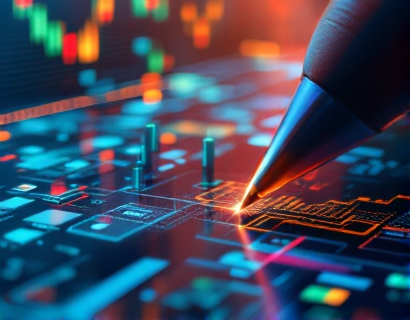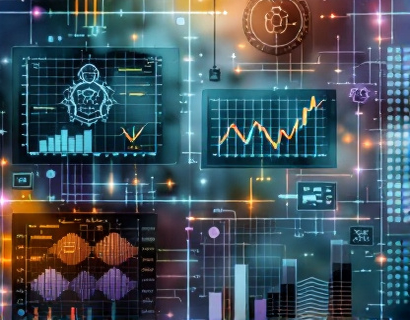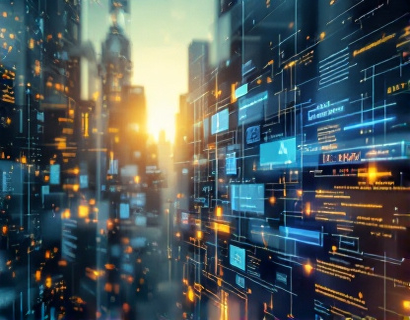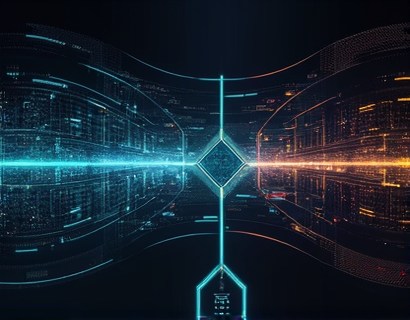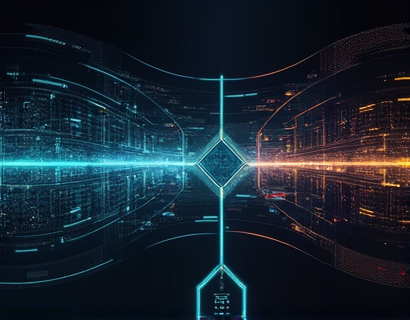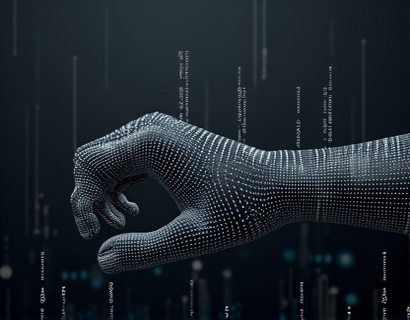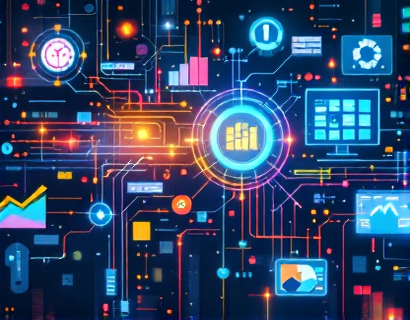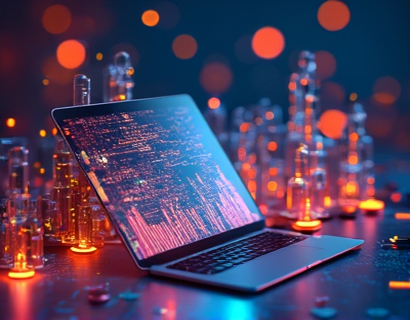Decentralized Innovation: Empowering Digital Transformation with AI and Crypto Integration
The intersection of artificial intelligence (AI) and blockchain technology is giving rise to a new era of digital innovation, fundamentally redefining how we experience and interact with digital services. This transformation is not just about enhancing existing processes but about creating entirely new paradigms that empower users and businesses alike in the decentralized economy. As we delve into this topic, it's essential to understand the foundational technologies driving this change and their implications for the future of digital transformation.
Foundations of Decentralized Innovation
At the heart of decentralized innovation lies blockchain technology, a distributed ledger that ensures transparency, security, and immutability. Unlike traditional centralized systems, blockchain operates on a network of nodes, each maintaining a copy of the ledger. This decentralization eliminates single points of failure and reduces the risk of tampering, making it an ideal foundation for trustless transactions and data management.
Artificial intelligence, on the other hand, brings the power of machine learning and cognitive computing to the table. AI algorithms can process vast amounts of data, identify patterns, and make predictions or decisions with minimal human intervention. When combined with blockchain, AI can leverage the transparency and security of decentralized networks to enhance its capabilities, leading to more robust and trustworthy systems.
Redefining Digital Experiences
The integration of AI and blockchain is redefining digital experiences by creating more intuitive, secure, and personalized interactions. For instance, decentralized identity management systems powered by AI can provide users with greater control over their personal data. These systems use blockchain to store and manage identity credentials, ensuring that users can verify their identity without relying on centralized authorities. AI algorithms can further enhance this process by analyzing user behavior and preferences to offer tailored services and recommendations.
In the realm of e-commerce, decentralized marketplaces are emerging that utilize AI to match buyers and sellers more efficiently. These platforms use blockchain to ensure secure and transparent transactions, reducing the need for intermediaries and lowering costs. AI-driven chatbots and virtual assistants can provide 24/7 customer support, handling inquiries and resolving issues in real-time, thereby enhancing user satisfaction and engagement.
Unlocking New Growth Opportunities
The convergence of AI and blockchain is unlocking new growth opportunities across various industries. In finance, decentralized finance (DeFi) platforms are leveraging AI to offer innovative financial services such as lending, borrowing, and trading. These platforms benefit from the transparency and security of blockchain, while AI algorithms optimize trading strategies and risk management. This synergy not only democratizes access to financial services but also opens up new revenue streams for participants.
In the healthcare sector, AI and blockchain are collaborating to create more efficient and secure health data management systems. Patient data can be stored on a blockchain, ensuring privacy and integrity, while AI can analyze this data to provide insights for diagnosis and treatment. This combination can lead to more personalized and effective healthcare solutions, improving patient outcomes and reducing costs.
Enhancing User Interactions
The integration of AI and blockchain is also transforming how users interact with digital services. Smart contracts, self-executing contracts with the terms directly written into code, can automate complex processes, reducing the need for intermediaries and increasing efficiency. AI can enhance smart contracts by providing predictive analytics and real-time monitoring, ensuring that contracts are executed as intended and adjusting parameters based on changing conditions.
User interfaces are becoming more intuitive and responsive thanks to AI-driven design tools that can analyze user interactions and optimize the user experience. Blockchain-based user feedback systems can ensure that user input is tamper-proof and transparent, leading to more reliable and trustworthy feedback loops. This combination not only improves user satisfaction but also fosters a more collaborative and community-driven approach to product development.
Challenges and Considerations
Despite the numerous benefits, the integration of AI and blockchain is not without challenges. Scalability remains a significant issue, as both technologies require substantial computational resources. Blockchain networks, in particular, face challenges in processing high volumes of transactions efficiently. However, ongoing research and development are addressing these issues, with new consensus mechanisms and layer 2 solutions emerging to enhance performance.
Regulatory uncertainty is another factor to consider. As decentralized technologies gain traction, governments and regulatory bodies are beginning to take notice, leading to a patchwork of regulations that can vary significantly by region. Companies and developers must navigate this complex landscape, ensuring compliance while advocating for clear and supportive frameworks that foster innovation.
Future Prospects
The future of decentralized innovation is promising, with AI and blockchain continuing to evolve and converge in exciting ways. One area of focus is the development of decentralized artificial intelligence (DAI), where AI models are trained and deployed on decentralized networks. This approach can enhance privacy, reduce bias, and democratize access to AI technologies. DAI has the potential to revolutionize industries by providing more transparent and equitable AI solutions.
Another promising development is the integration of AI with other decentralized technologies such as the Internet of Things (IoT) and 5G networks. This convergence can lead to smarter, more autonomous systems that can process and act on data in real-time, opening up new possibilities in areas like smart cities, autonomous vehicles, and industrial automation.
Conclusion
The synergy between AI and blockchain is driving a transformative wave of digital innovation, redefining how we experience and interact with digital services. By leveraging the strengths of both technologies, we can create more secure, efficient, and user-centric systems that empower individuals and businesses in the decentralized economy. As these technologies continue to mature, the potential for new growth opportunities and enhanced digital experiences is vast, making this an exciting time for tech professionals and enthusiasts alike.










